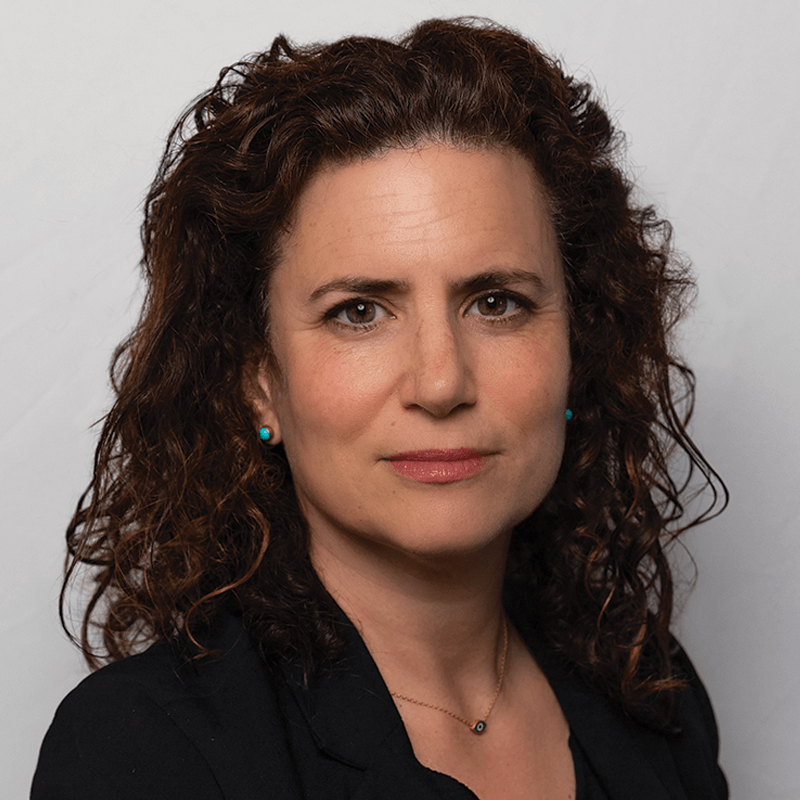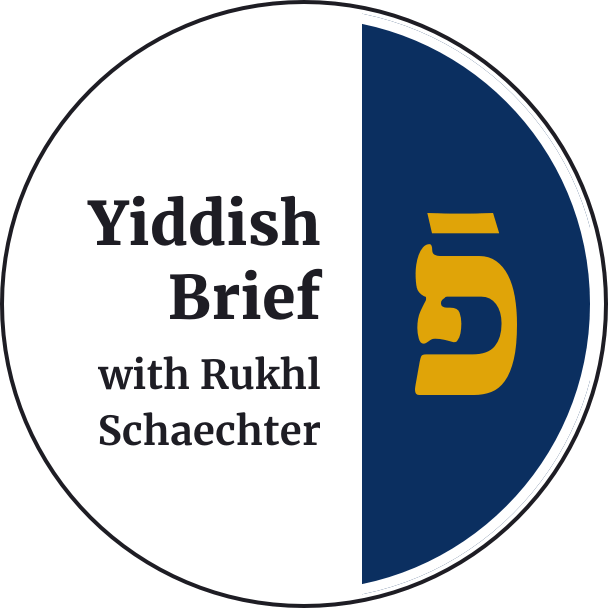Allison Brown presenting her mother’s prize-winning noodle kugel recipe at the first open mic night Photo by Arndt Beck
“Nu” is one of these Yiddish words that has various meanings, like a call for somebody to do something: “Nu? Come on!” But it can also have a more curious implication, as if to say: “What’s next? What do you have to say?”
Put together, these two shades of nu describe, in a nutshell, the concept of Berlin’s first Yiddish open mic series, “Nu? Yiddish in All Art Forms,” which was launched in the Galerie ZeitZone, an artists’ venue, on March 18. In essence, it’s a call for people not to be shy, to get on stage and show the audience what they can do. The only rule is it has to be related to Yiddish.
The 12 acts that evening covered a range of art forms: (interactive) poetry, book excerpts, singing, and instrumental music, as well as announcements of upcoming Yiddish projects. One presenter did something unusual for an open mic event: she revealed her mother’s prize-winning noodle kugel recipe.
Many of the acts were written and performed in Yiddish, with a few in other languages. For every act, though, the event’s organizer, Jake Schneider, made sure to provide a translation — into English if necessary, but also, and more importantly, to Yiddish. “We wanted to create a space that is Yiddish first,” said Schneider. “At the same time, we don’t want to scare people away who don’t know Yiddish.”

The “Nu?” series is hosted by Shtetl Berlin, a grassroots Yiddish culture organization focused on music, but Schneider and many of the participants come from another group, Yiddish.Berlin, which organizes poetry readings and literary events, as well as the Yiddish-speaking social club Shmues un Vayn (Chat and Wine). The goal of the “Nu?” series is to help build a bridge between these two worlds: the Yiddish language and literary culture community and the thriving local Yiddish music scene.
Schneider organized the mic series in order to provide an audience for contemporary Yiddish poets who’ve already published their work but rarely have an opportunity to share it with the public. Katerina Kuznetsova, herself an organizer of Yiddish events (like this one in honor of Yiddish women poets) recited one poem about insomnia and another about the suppression of female anger — a text that many women in the room could probably relate to.
After the open-mic event, Kuznetsova told me she appreciates the absence of hierarchies and experimental character of the open mic format: “Here, I felt like I’m allowed to try out some works that I was not sure about, to ‘test’ them on the audience.”
Aside from published writers like Kuznetsova, “Nu?” aims to draw newcomers into the community. Unlike Shmues un Vayn, which is mainly meant for the relatively small community of locals who already speak Yiddish, “Nu?” tries to make Yiddish more accessible for people who aren’t part of the Yiddish culture scene — at least, not yet. One such newcomer was 16-year-old Niki Bergeron, who impressed the audience with a virtuoso performance of the klezmer tune “Hopkele” on violin.
The open format also worked well for Shoshana Simons, who presented her poem “Across The Shtetl Multiverse,” a synthesis of interviews she’s been doing with Jewish women across the diaspora about their relationships with Jewish identity and the concept of liberation. She presented the poem in her native language, English, before it was read aloud in a Yiddish translation.
“As someone who knows some Yiddish but not enough to participate in Shmues un Vayn fully, and as someone who wants to share art beyond music, I really appreciated this space,” Simons told me.
While English translations were provided for all Yiddish-language acts, Schneider chose to moderate the program solely in Yiddish. Thanks to the connection between Yiddish and German, the German speakers in the audience could probably understand bits and pieces without knowing Yiddish. Still, making Yiddish the main language of communication was in itself a strong statement.
Allison Brown, who presented her mother’s kugel recipe, said her parents would use Yiddish as a secret language when she and her siblings weren’t supposed to understand. She later learned German, but never mastered Yiddish. Hearing the language at the open mic gave her a “warm feeling,” and she said she didn’t feel excluded as a non-speaker. Still, she felt that the event was “definitely for Yiddish speakers.”
Finding a balance between events that are almost entirely in Yiddish and simultaneously making them accessible to a wide audience will probably be a challenge to consider for future “Nu?” events.
And yet, support for keeping the event in Yiddish came from several non-Yiddish-speaking members of the audience, too. One participant, Luke, who had spontaneously dropped in to the open mic event without knowing any Yiddish said it simply: “The more Yiddish, the better!”

I hope you appreciated this article. Before you go, I’d like to ask you to please support the Forward’s award-winning, nonprofit journalism during this critical time.
At a time when other newsrooms are closing or cutting back, the Forward has removed its paywall and invested additional resources to report on the ground from Israel and around the U.S. on the impact of the war, rising antisemitism and polarized discourse.
Readers like you make it all possible. Support our work by becoming a Forward Member and connect with our journalism and your community.
— Rachel Fishman Feddersen, Publisher and CEO
